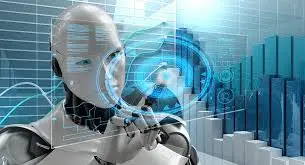Digital Twin, A Potential Technology Of The Future
Digital twin is a kind of virtual model. With the help of this model, how an object, device or device actually works, can be seen through virtual means.
To understand how the digital twin works, let’s think of a smart wind turbine.
What changes or improvements are needed to make the turbine work more efficiently can be found out through the digital twin model of the machine.
For this, information will first be collected on how the device works from the various sensors in the turbine. For example, all the important information like temperature, weather or how much energy is getting from that turbine will be processed. And a digital copy of the turbine will be made using that information.
Later, when the digital twin model of turbine is run through virtual, it will be possible to study the whole process very easily. With this, if there is any problem in the device, it is possible to identify it very quickly. It is also possible to find out if the turbines will produce more electricity if some changes are possible.
The concept of digital twin technology was first mentioned in a 1991 book, Mirror Worlds. The book was written by American computer scientist David Gallanter. Then in 2002, Dr. Michael Greaves, a teacher at the University of Michigan at the time, introduced digital twin technology in the first manufacturing industry. He was the first to come up with the idea of digital twin software.
In this digital age, digital twin technology can be applied in any industry. And there are many types of benefits. Basically, the sector that is most developed by any industrial organization when this technology is used is research and development. Basically, digital twin technology can be used to make any product or service more perfect over time.
Although digital twin technology can be applied in various industries, the construction industry, health sector, automotive industry, urban planning, manufacturing industry and power generation sector can benefit the most from it.
Digital twin technology can be divided into several parts. These are:
Component Twins
The component twins are the basic unit of the digital twin. The smallest example of any functional digital twin model is the component twins.
Asset Twins
When two or more components work together, ‘asset twins’ are formed. Asset twins explain how components work together.
System or unit twi
This stage digital twin is used to determine what changes need to be made to improve the performance of any model. Basically, the whole system of the model works by understanding how the system or unit twins work.
Process Twins
With the help of process twins, the model as a whole can be studied. How a system like any other large-scale production facility works is known through Process Twins.
In short, the digital twin is an emerging and promising technology. Last year, the digital twin had an international market value of 3.1 billion. However, experts believe that the use of this technology will increase very quickly over time. The market is expected to grow to 42.2 billion by 2028.
As the market value of the digital twin increases, so will the new possibilities for using this technology in various sectors. As a result, many complex technological tasks will be easier in the future.


